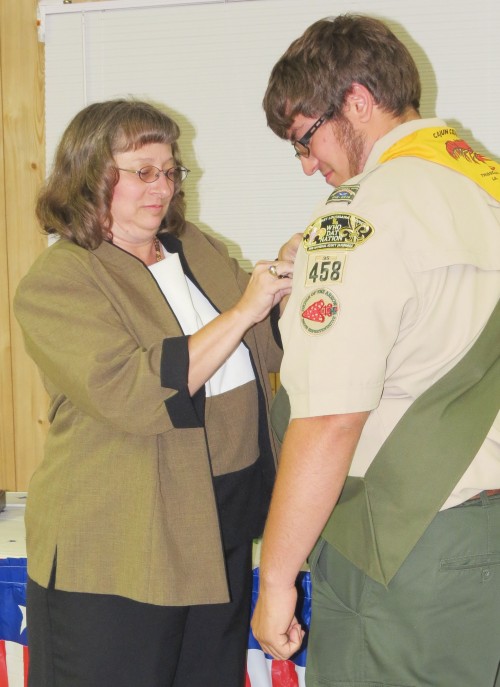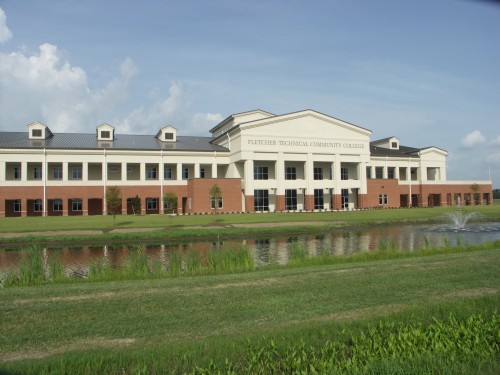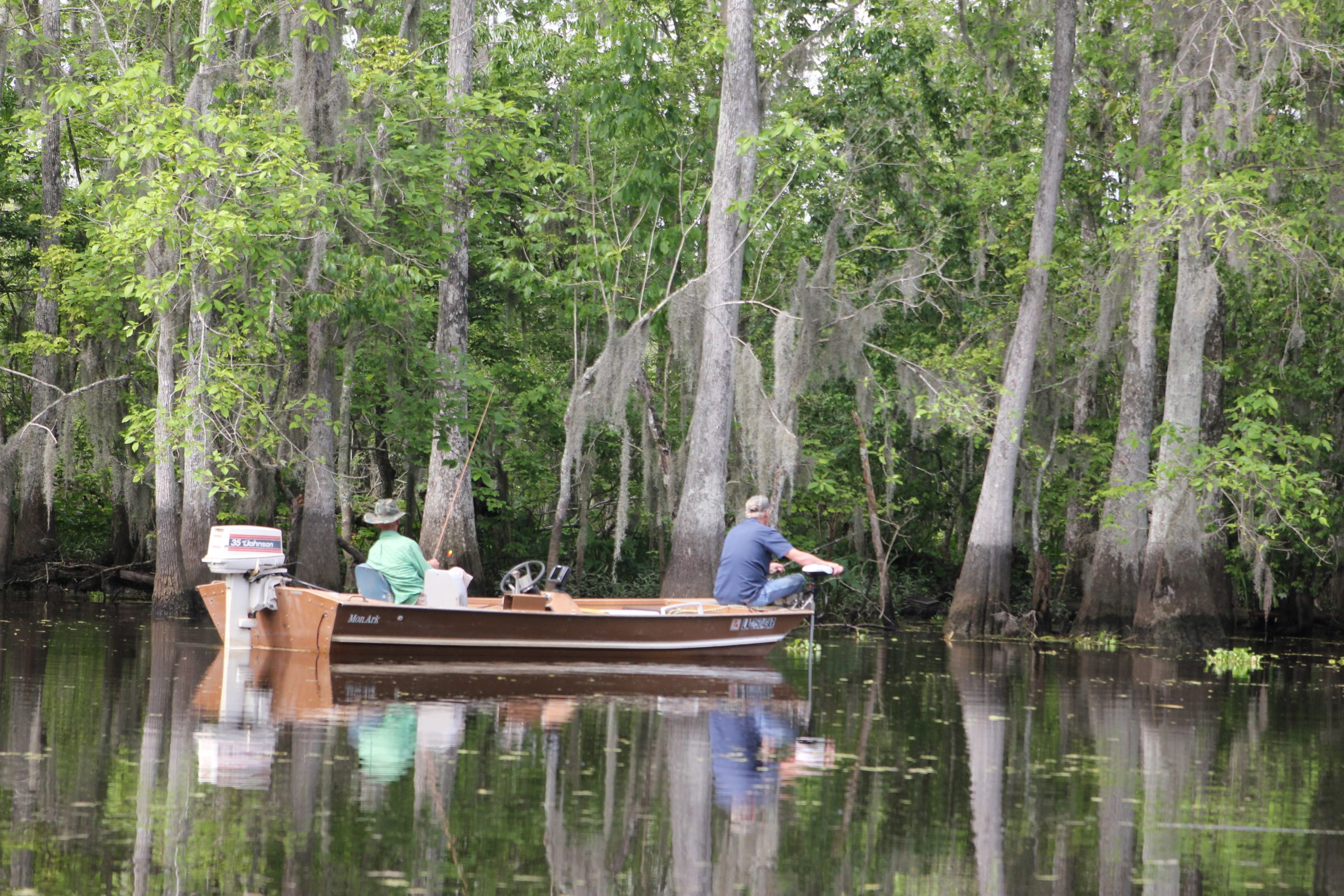
After edgy meeting, one council member presses assault charges on another
July 25, 2012
Thibodaux scout earns top honor
July 25, 2012L.E. Fletcher knew the school he was leading provided a worthy service with well-trained graduates. The challenge during his years as director of the South Louisiana Trade School – between 1968 and 1984 – was public opinion toward any institution that was not a typical four-year college.
Fletcher recognized that two-year technical colleges were unappreciated, even looked down upon and considered to be places people went for menial training when they were unable to excel at anything else.
Knowing that popular opinion was far from accurate, Fletcher set out to not only educate students, but train others by producing the best program possible. His goal was to build a technical school program in Terrebonne Parish that would become respected for skilled training and closely tied to business and the broader community.
It took time with gradual improvements along the way, but Fletcher’s completed design will be realized Tuesday, when L.E. Fletcher Technical Community College, an expansion of the institution Fletcher led for 16 years, and named in his honor in 1999, officially opens a new main campus at 1407 La. Highway 311.
“This was L.E. Fletcher’s vision,” Chancellor Travis Lavigne said of his friend, mentor and predecessor. “He would be so proud.”
Looking Inside
Fletcher Arts and Sciences Director Donna Estrada began teaching at the school in the year 2000, when as a technical college it had just added a general studies program.
During the past 12 years Estrada has seen the student census grow from approximately 350 to more than 2,500 and the programs advance to meet the demands of a an expanding market.
“When I first started we were a technical college and the focus was on the technical programs,” Estrada said. “General Education, as we know it, was a supplement to those programs. I have seen a big growth and that community college mentality has changed.”
Prior to any reception for donors, walkthrough visits by dignitaries or even the yet-to-be celebrated ribbon cutting, Lavigne offered a sneak peek inside.
The morning visit was made even as final touches were being applied to painted surfaces, computers and technical equipment were being installed, and various areas were prepared for yet-to-be delivered furniture.
Towering above the horizon of sugar cane fields, the new academic and technical facility is spotted from a significant distance.
Along La. Highway 311, between the BP Operations Learning Center, at U.S. Highway 90, and the Weatherford International plant, less than a mile to the north, it would be difficult to miss the new Fletcher facility.
From the highway an initial close-up view of the $27million, two-story and 99,000-gross-square-foot structure, on approximately 70 acres, is made across a rose outlined pond with lighted fountain centerpiece.
The west side of this building display windows that frame the two-story atrium-like library, classrooms for developing draftsmen and engineers and administrative offices.
Two parking lots, magnolia-lined sidewalks and a main entrance are found on the building’s east perimeter. Complementing the opposite side of this structure, massive windows frame a two-story atrium entrance. Split frosted glass staircases and common areas set the tone for a professional, yet casual setting.
Earth tones blend in classrooms, computer labs and common areas.
The only room painted white on campus is a modest, three-window workplace on the southwest corner of the second floor, which is Lavigne’s office. “That’s just because I like white,” the chancellor said of his color selection.
Rectangular ceramic tiles line foyers and corridors throughout the new building. Classroom and computer lab flooring features carpet squares and no-wax tile, depending on usage of select rooms.
Technology is highlighted with new computer-equipped classrooms. Nine plasma screen instructional units and several promethium boards add to the learning center. Any computer or system updates can be performed at a central location so as to prevent delay in equipment usage.
A student common area offers space for snacks in an open and relaxed atmosphere.
Fletcher’s state-of-the-art library features individual meeting and study rooms.
The new facility also contains community meeting centers for local business and organizations to reserve for use.
“Look at this,” Lavigne said, opening the door to a music and art center. “I never thought I’d see this at a trade school.”
Windows throughout the facility are double-paned glass with hurricane strength of up to 130 mph. “We have all this glass so people know this is an open facility,” Lavigne said. “Every classroom and every office, including my own, has a side window. These windows are always to be unobstructed.”
The new main campus, in addition to housing administrative offices, will be home to Fletcher’s drafting and design programs, social and applied science classes and deepwater production and operator training. “This is to accommodate primarily the academic programs that support the technical programs,” Lavigne said.
“Teaching is definitely going to be enhanced because of the state-of-the-art technology that we will have,” Estrada said. “It will help provide our students with many learning opportunities [such as] being able to connect with mobile devices. Those are some of the things that will help enhance learning.”
Influencing Outside
In January, BP entered into a business and learning partnership with Fletcher, donating $4 million for construction of an Integrated Production Technology Program building on the new campus. The state allocated another $4 million in matching funds. Construction has not started on that structure.
Fletcher’s long-time facility at 310 St. Charles St. will continue to be used for heavy industrial training, such as machine tool technology, welding, automotive studies and diesel marine education.
Fletcher learning facilities also include nursing and allied health studies at 5396 La. Highway 311, and the Louisiana Marine and Petroleum Institute at 331 Dickson Road.
Lavigne said Fletcher has been able to accomplish opening an expanded facility because of the relationship it has with regional businesses. Financing of the new campus was made with state grants and individual donations.
Integrated technology and industrial partnerships with companies like BP, Shell and others highlight Fletcher as an influential asset.
“The Fletchers of the world are going to be the saviors [of education and industry],” Bollinger Shipyard Chairman and CEO Donald “Boysie” Bollinger said. “It is critical to have a trained workforce that can adapt to the jobs we have in Louisiana.”
“There is nothing more important to economic development than education,” Terrebonne Economic Development Authority CEO Steve Vassallo said. “Having a school with Fletcher’s technical competence and disciplines, some of which lead the state of Louisiana, is such a magnet to attract not just students, but build business. For example, we are providing the skills we need in the marine industry. We don’t have to ship students up to Baton Rouge or New Orleans to get trained.”
“Gulf Island has been a supporter of Fletcher for many years and will continue to be a supporter,” Gulf Island Fabrication President and COO Kirk Meche said. “Many of our employees have attended and graduated from one of the many programs offered. Now with the new facilities, Fletcher will add several new curriculums that will continue to support our area businesses as we make every attempt to keep the talent in our area local.”
Progressive Purpose
“When I came here as a related-studies instructor in 1971, it was a trade school,” Lavigne said. “Everyone thought if you weren’t able to make it in college you went to trade school. Mr. Fletcher and I fought that image for years.”
Lavigne, who became the school’s director in 1984 and was named chancellor in 2003, said during the past four decades, Fletcher has successfully broken free from being considered anything less than a legitimate academic institution.
By entering into cooperative studies arrangements with Nicholls State University, both Fletcher and its partner institution have each been able to expand offerings that are unique in the state of Louisiana.
“I am happy when a student comes here and gets an associate of arts or an associate of science degree, or a general studies degree, then goes on to Nicholls or LSU as a junior and gets a baccalaureate degree,” Lavigne said. “I’m also happy when a student comes here to get an associate of applied science degree, which is 21 hours of academic coursework and the remaining [42] hours of technical work in instrumentation or all the deepwater technology we have. In two years, they graduate and their starting salary is $60,000 a year.”
Lavigne appealed to the state Legislature for Fletcher to be designated as a technical community college in 2002. In turn, the then-community college gained accreditation by the Southern Association of Colleges and Schools.
“That way I could dispel the myth that technical schools are not as academically oriented as four-year universities,” Lavigne said. “Sure, we don’t do some of the research that a four-year college does. That is not our mission. We do technical skills training.”
“Fletcher opening this campus is important to us for a lot of reasons,” Vassallo said. “Travis has expressed an interest in forming a partnership between Fletcher and a college in China. This could benefit us if students come here for training and then expand the local business base.”
Looking Forward
“Today is different than it was [when Fletcher first opened as the South Louisiana Trade School in 1951], thank God,” Lavigne said. “People now really value the skill development and academic accomplishments of students that attend technical community colleges.”
Lavigne said it is unfortunate that in many cases schools like Fletcher have to build new facilities to make a public statement. “We were so fortunate that in 2007 the technical community colleges got an appropriation of $20 million to build something like this and 23 other projects around the state. It’s just amazing.”
Construction on Fletcher’s new facility began in January 2011. Completion with a ribbon cutting ceremony and reception 18 months later does not signify the end of what this institution has to offer. For Lavigne, it is simply an indication of how L.E. Fletcher’s goal for acceptance continues to expand.
A new day has arrived for Fletcher Technical Community College with the opening of its new main campus on La. Highway 311. Positioned between BP and Weatherford, the new educational training facility stands to demonstrate its close relationship with industry of the Tri-parish region.














